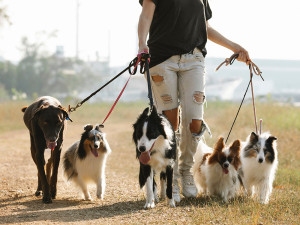Do English Bulldogs Face Extinction?
One of the most popular breeds in the world is also one of the least genetically diverse, causing huge implications for the breed

Share Article
Not surprisingly, a studyopens in new tab found that the English Bulldog no longer retains enough genetic diversity to correct life-threatening physical and genomic abnormalities. This means breeders cannot use the established population of purebred Bulldogs to reverse the trend of extreme and painful exaggerations such as crippling dwarfism and respiratory deformities – traits that uninformed pet parents, unfortunately, find appealing. How did this happen? Can anything be done to save the English Bulldog?
It all goes back to English Bulldogs in the 1800s
In the early 1800s, Bulldogs were trained for bull-baitingopens in new tab, a particularly cruel and vicious sport. In 1835, the Royal Society for the Prevention of Cruelty to Animals convinced Parliament to enact the first animal cruelty law for the protection of domestic animals, including outlawing bull baiting.

Get (totally free) deals for food, treats, accessories, tech and way more pet parenting must-haves.
As such, the Bulldog had outlived its usefulness. Like the pre-19th century Wolfhound that disappeared with the eradication of wolves in the British Isles, and the Tumbler whose demise was the invention of hunting firearms, the Bulldog was destined for extinction.
But, beginning around 1840, the Victorian’s unabashed sentimentality was a catalyst for saving even the most formidable working breeds from their inevitable demise. Like many others, such as the Dachshund and Mastiff, Bulldogs went from working hard to hardly working. Utility dogs were ‘refined’ and transformed to fill jobs they weren’t originally bred for – as show dogs and companions. Altered physical and behavioural characteristics and decreased aggression levels were more compatible with their augmented duties as house pets.
The American Kennel Club first recognised the breed in the US in 1886. So, beginning in the late 1890s, Bulldog breeders selected small groups of genes from a diverse genome to manipulate the dog’s appearance. They were, in effect, increasing the odds that genetic anomalies would more likely be expressed in an effort to bring out exaggerated traits, like the Bulldog’s baby-like face, corkscrew tail and affable personality.
As ‘desirable’ aesthetic traits were selected for, other genetic variants, including beneficial genes that contribute to overall health, were eliminated from their gene pool, never to be reclaimed.
Past limits on the gene pool lead to modern health problems
In the last few decades, the most exaggerated traits in the Bulldog – the extreme brachycephalic skull and deformed skeleton – have become increasingly pronounced because naive consumers desire that look and consequently, that’s what many breeders select for. Driven by economics, fashion and uninformed decisions, breeders and buyers either ignore or are unaware of the significant genetic problems that have spread throughout the Bulldog population.
The health problems of the English Bulldog have been well documented. The breed ranks second in congenital disease deaths among puppies. Their brachycephalic skull causes upper respiratory problems, a leading cause of death among Bulldogs. But that’s not all – there’s also chondrodysplasia (a skeletal disorder causing hip and elbow dysplasia) and myriad other health problems with bulldogs’ teeth, skin, heart, eyes and immune system.
The demise of the breed may not be a good thing for Bulldog enthusiasts, but it will put an end to the malformed and painfully crippled modern Bulldog that is recognised today. The good news is that some breeders intend to bring back the ‘Olde-Fashioned-Bulldogge’ by cross-breeding with similar breeds to re-diversify the genome. Will Bulldog enthusiasts jump on board to save the breed and ensure they can live a healthy and happy life? Only time will tell.
Jane Brackman, PhD
Jane Brackman, PhD, is an authority on the cultural history of canine domestication and the author of two books on pets in 19th-century America.
Related articles
![Hands of an unrecognizable woman are petting small Dachshund dog in the park.]()
Small Dogs With Long Noses Live the Longest, New Study Finds
Scientists are seeing some trends when it comes to pup mortality
![Keanu Reeves and Halle Berry star in John Wick with two German Shepherd dogs.]()
Why You Shouldn’t Get a Dog Breed Because You Saw it in a Film
Even if you do want to live that Elle Woods life...
![Brown dog with white markings standing in leaves]()
Can You Identify Dog Breeds Visually?
The truth is breed labels are often wrong
![A woman walking 5 dogs on leashes outside.]()
Breed Does Not Equal Behaviour
A study found that a dog’s breed accounts for less than 10 percent of their behaviour
![A woman sitting with her arms around two dogs in a park.]()
Why Breed Standards Don’t Work
Breeders, judges and historians talk about breed standards – learn how they’re supposed to work and why they don’t
What Are The Different Types Of Pet Insurance?
Everything you need to know about how pet insurance works in the UK





